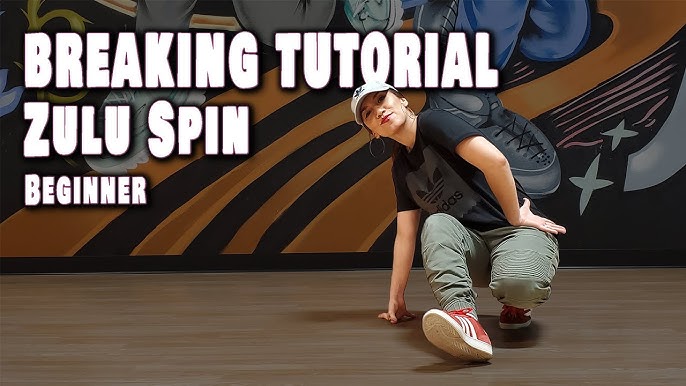Breakdancing, or b-boying as it’s traditionally known, is not just a dance—it’s an art form that combines rhythm, athleticism, and self-expression in ways that can captivate any audience. Among the galaxy of moves that a b-boy or b-girl can deploy, Zulu Spin stands out for its roots in cultural tradition and its striking visual appeal. This blog post will provide a comprehensive guide on how to execute the ZuluSpin, explaining its historical background, detailing the steps involved, and offering tips to integrate it into your breakdancing footwork.
Breakdancing, also known as b-boying, b-girling, or breaking, is a dynamic and energetic dance style that originated in the Bronx borough of New York City in the 1970s. It’s considered one of the foundational elements of hip-hop culture, alongside DJing, MCing/rapping, and graffiti.
Here’s a breakdown of breakdancing’s key features:
- Street-born: Developed by African American and Latino youths, breakdancing found its roots in the streets and communities.
- Acrobatic moves: Breakdancers perform impressive feats of athleticism, including spins, freezes, and power moves that require strength, balance, and coordination.
- Improvisational: While there are foundational moves, breakdancing is known for its freestyle nature, allowing dancers to express themselves creatively.
- Set to rhythm: Breakdancing is typically performed to the energetic beats of hip-hop music, particularly focusing on the “break” sections of the songs.
Historical Roots of Zulu Spin
The Zulu Spin is a fascinating breakdancing move that has been seen in various cultures around the world. Originally observed in African dance, it has also appeared in Russian folk dancing and even traditional German dances. Each of these cultures utilized the spin in their communal dances, often performed in a cypher—a circle of dancers, where each dancer takes a turn showcasing their skills.
Despite its widespread use in various folk dances, ZuluSpin was popularized by the breakdancing community, who adapted its fluid, spinning motion into the highly rhythmic and physically demanding context of b-boying.
Fundamentals of Zulu Spin
To master Zulu Spin, you need to start with the basics. Here’s a step-by-step guide to help you learn this dynamic move:
- Starting Position:
- Begin by standing on the balls of your feet, knees slightly bent.
- Lower your body into a crouched position, keeping your back straight and your head up.
- Balance and Control:
- Without using your hands, practice balancing in this crouched position.
- Familiarize yourself with this stance, as it’s crucial not only for ZuluSpin but for other moves like the helicopter and eclipse.
- Initiating the Spin:
- Place your hands on the ground in front of you to provide stability.
- Use your arms to help propel your body as you begin to turn.
- Focus on keeping your legs fixed in the bent position to maintain a compact and controlled spin.
- Mastering the Momentum:
- As you become comfortable with the spinning motion, practice increasing your speed.
- Work on tightening your spin by pulling your arms closer to your body, which will help you rotate faster.
Integrating Zulu Spin into Your Footwork
The Zulu Spin is not only an impressive move by itself but also a versatile tool for enhancing your overall footwork routine. Here are some tips on how to incorporate ZuluSpin into your dance:
- Direction Changes:
- Use Zulu Spin to change directions seamlessly during your footwork. This can make your dance appear more dynamic and unpredictable.
- Practice transitioning from a six-step or any basic footwork pattern into a Zulu Spin, and then out again into another direction or move.
- Combining with Other Moves:
- The compact nature of Zulu Spin makes it easy to combine with other breakdancing moves.
- Try integrating the spin into longer sequences, using it as a bridge between different elements of your routine.
- Practice and Precision:
- Like any breakdancing move, the key to perfection is practice. Spend time working on the smoothness and fluidity of your spins.
- Pay attention to the details—proper hand placement, leg position, and momentum are crucial for making Zulu Spin look polished and professional.
Conclusion
The Zulu Spin is a testament to the cultural roots of breakdancing, reflecting its heritage in traditional folk dances from around the world. By mastering this move, you not only enhance your dancing repertoire but also pay homage to the rich, diverse histories that contribute to the art of breakdancing. Remember, the essence of b-boying lies in expression and innovation—use the Zulu Spin to express your unique style and keep pushing the boundaries of what you can do on the dance floor. Let the rhythm guide you, and most importantly, have fun!


Leave a reply